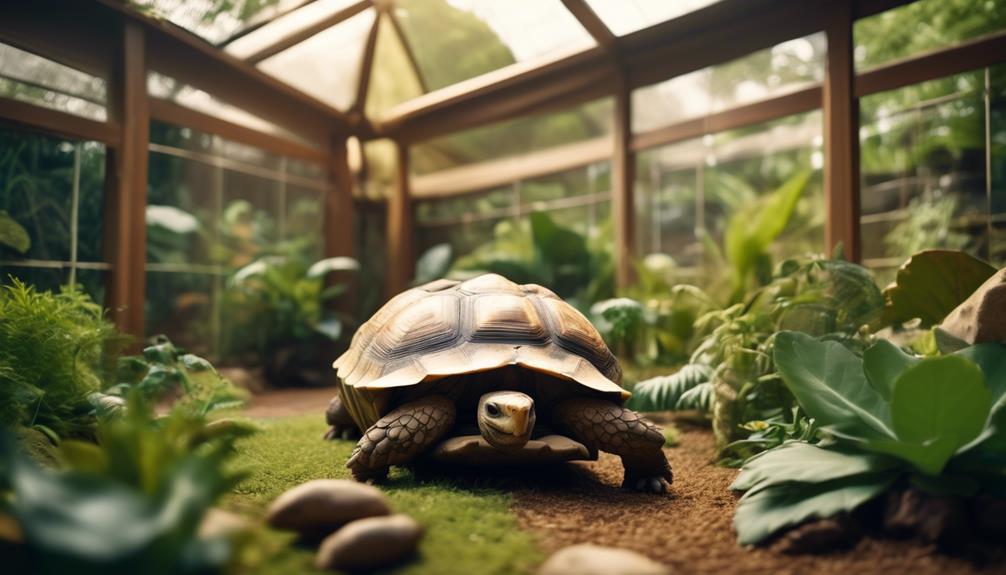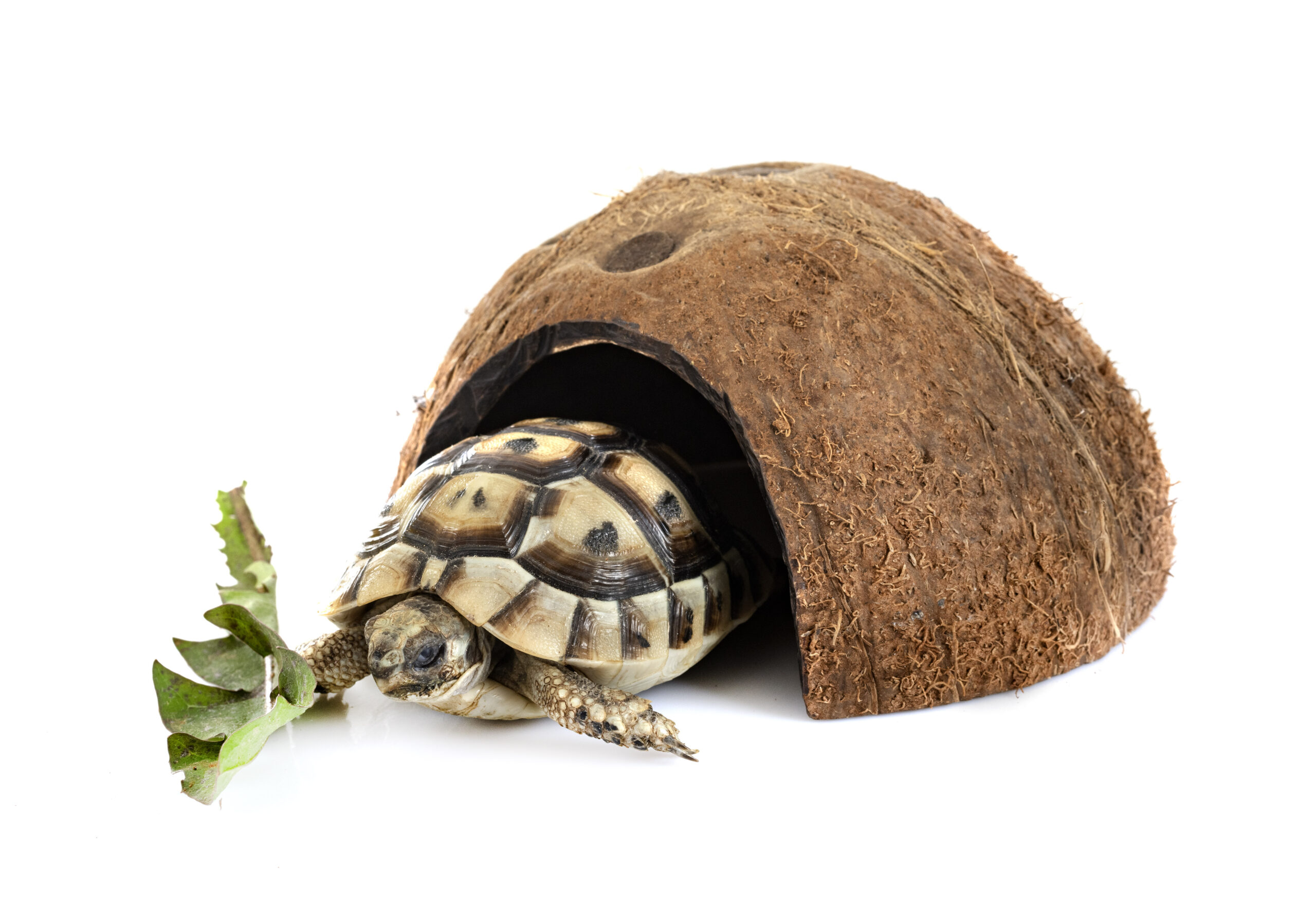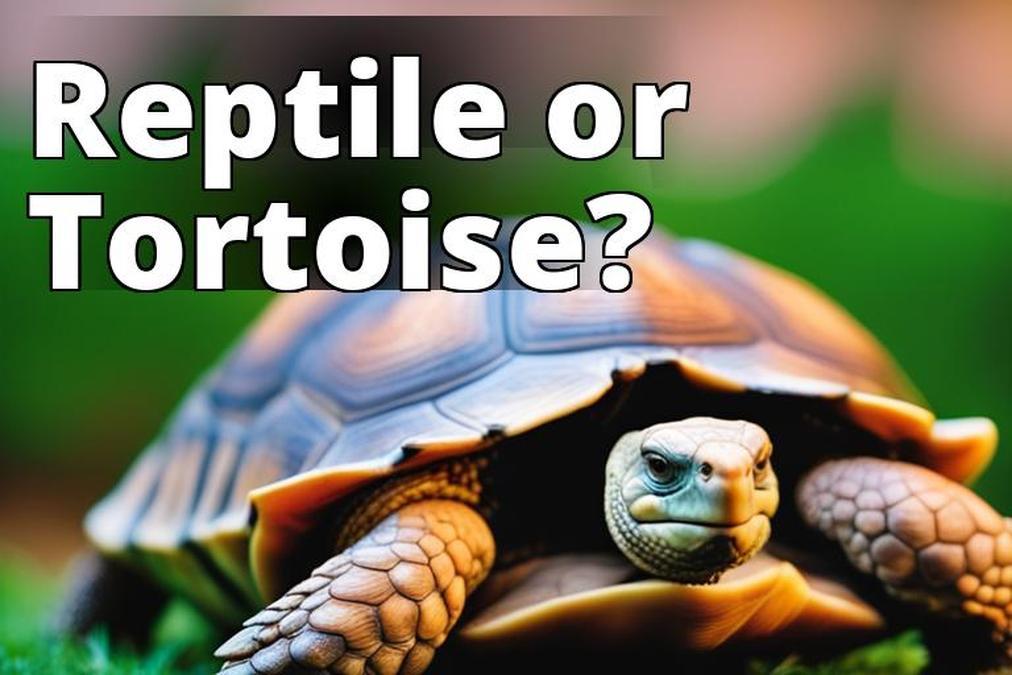In the vast and intricate natural world, the survival of a pet tortoise in the wild is no small feat. As we delve into this compelling question, we uncover an array of challenges that these beloved creatures face when released from captive life. From struggling to adapt to unfamiliar environments to difficulties in foraging for sustenance, pet tortoises are ill-equipped to navigate the harsh realities of nature. Additionally, there looms the risk of disease transmission and vulnerability to predators, posing further threats to their survival. Extreme weather conditions can also prove fatal for these gentle beings, leaving them exposed to freezing temperatures or scorching heat. Moreover, their release into the wild can have far-reaching consequences on local ecosystems as they disrupt native populations and introduce detrimental genetic traits. It is crucial to recognize that such actions may not only be against the law but also carry severe legal implications. Therefore, exploring alternative avenues through appropriate channels or seeking assistance from animal shelters becomes imperative when faced with caring for a pet tortoise beyond one’s means.
Key Takeaways
- Pet tortoises are not likely to survive in the wild due to difficulty adapting to the new environment.
- Releasing a tortoise into the wild can result in disease transmission to other tortoises and species.
- There is a high risk of pet tortoises being eaten by predators in the wild.
- Tortoises may starve to death due to difficulties in foraging for food.
Challenges of Adaptation
The challenges of adaptation faced by pet tortoises in the wild are numerous and significant. One major challenge is the difficulty in foraging for food. Pet tortoises are typically fed by their owners, and as a result, they do not learn to find and consume food on their own. In the wild, where food sources may be scarce or unfamiliar, this lack of foraging skills can make it extremely difficult for pet tortoises to survive.
Another challenge is the vulnerability of pet tortoises to extreme weather conditions. These animals have been accustomed to living in controlled environments with stable temperatures. When exposed to the unpredictable weather patterns of the wild, they may struggle to adapt and may freeze or overheat, leading to death.
Furthermore, pet tortoises often lack immunity to diseases carried by local tortoise populations. In contrast, wild tortoises have developed immune defenses against these diseases over time. This puts pet tortoises at a higher risk of illness and death when introduced into a new environment.
Additionally, pet tortoises do not possess the survival skills necessary to protect themselves from predators in the wild. They have been sheltered from natural predators while under human care but are now defenseless against potential threats such as birds or mammals that prey on them.
Releasing pet tortoises into the wild can lead to negative consequences for the local population. By introducing non-native individuals, there is a risk of introducing bad genes that could harm the genetic diversity and health of local populations.
In conclusion, surviving in the wild poses significant challenges for pet tortoises due to difficulties in foraging for food, vulnerability to extreme weather conditions, lack of immunity to local diseases, and absence of survival skills necessary for protection from predators. Rehoming or finding alternative care options through animal shelters is recommended instead of releasing them into unfamiliar environments where their chances of survival are slim.
Disease Transmission Risk
Disease transmission between captive and native species can spread through populations like wildfire, much like a contagious disease in a crowded room. When pet tortoises are released into the wild, they pose a significant risk of harboring diseases and spreading them to native populations. This is particularly concerning as pet tortoises may not have immunity to diseases carried by local tortoises, making them vulnerable to illness and death.
Furthermore, releasing a pet tortoise into the wild can introduce bad genes into the local population. Breeding practices for pets are often focused on aesthetic traits rather than genetic health, leading to an increased likelihood of genetic problems. By interbreeding with native tortoises, these pet tortoises may be introducing harmful genetic traits that negatively impact the survival and health of future generations.
In addition to carrying diseases and introducing bad genes, pet tortoises released into the wild face an increased risk of being eaten by predators. Unlike their wild counterparts who have developed survival skills to protect themselves from predators, pet tortoises lack these natural defense mechanisms.
Therefore, it is crucial to avoid releasing pet tortoises into the wild due to the potential consequences they pose on disease transmission, genetic integrity of local populations, and individual survival. Instead, finding suitable rehoming options or contacting animal shelters is recommended when unable to provide proper care for a pet tortoise.
Predator Vulnerability
Predator threats can swiftly claim the lives of captive tortoises released into unfamiliar environments, leaving them defenseless and vulnerable. Pet tortoises lack the survival skills and instincts necessary to fend off predators in the wild. Unlike their wild counterparts, pet tortoises have not developed adaptations to avoid or escape from potential predators. This puts them at a significant disadvantage when faced with natural predators such as birds of prey, foxes, raccoons, and feral cats.
Releasing a tortoise into the wild exposes it to an entirely new set of dangers that it may not be able to navigate successfully. Without proper protection mechanisms, pet tortoises become easy targets for predators who view them as a source of food. Additionally, captive-bred tortoises may lack the speed and agility needed to evade these threats effectively.
The risk of predation is particularly high for pet tortoises because they are often larger than their wild counterparts due to selective breeding practices. Their size makes them more conspicuous and increases their attractiveness as prey.
Ultimately, predator vulnerability is a critical factor that severely limits a pet tortoise’s ability to survive in the wild. Releasing these animals without considering this aspect can result in unnecessary suffering and death for the individual animal while potentially disrupting local ecosystems by introducing non-native species or diseases carried by pet tortoises.
Difficulty in Foraging
Difficulty in foraging presents a significant challenge for captive tortoises released into unfamiliar environments, as their lack of experience and reliance on human feeding makes it challenging for them to locate and obtain necessary food resources. Pet tortoises are typically fed by their owners, which results in a dependence on regular meals provided at predictable intervals. In the wild, however, tortoises must rely on their instincts and natural foraging behaviors to find suitable food sources. This can be particularly problematic if the released pet tortoise is not familiar with the local vegetation or lacks the skills necessary to identify edible plants.
Foraging difficulties can have severe consequences for pet tortoises attempting to survive in the wild. Without proper nutrition, they may experience malnutrition and become more susceptible to various health issues. Additionally, prolonged periods without food can lead to weakened immune systems and increased vulnerability to diseases. The inability of pet tortoises to find enough food can ultimately result in starvation and death.
Furthermore, releasing a tortoise into an unfamiliar environment can disrupt the local ecosystem by introducing an additional herbivorous species competing for limited resources. This disruption can have detrimental effects on native plant populations as well as other animals that depend on those plants for survival.
Pet tortoises face significant challenges when attempting to survive in the wild due to their difficulty in foraging. Their reliance on human feeding and lack of experience make it challenging for them to locate and obtain necessary food resources independently. This struggle with finding adequate nutrition puts their health at risk and increases their vulnerability to disease. Moreover, releasing a pet tortoise into an unfamiliar environment can disrupt the delicate balance of the local ecosystem. Therefore, it is crucial to consider alternative options such as rehoming or contacting animal shelters instead of releasing pet tortoises into the wild
Extreme Weather Hazards
Extreme weather conditions pose significant hazards for captive tortoises released into unfamiliar environments. Pet tortoises, which have been kept in controlled indoor environments, are not accustomed to the temperature variations and extreme weather events that occur in the wild. These conditions can be especially challenging for tortoises that are not adapted to specific climates.
One of the most common extreme weather hazards is freezing temperatures. Tortoises from warmer regions, such as desert tortoises, are particularly vulnerable to cold weather. If exposed to freezing temperatures, pet tortoises may not have the ability to regulate their body temperature effectively and can freeze to death.
On the other hand, high temperatures can also be fatal for pet tortoises. Heatwaves and intense sunlight can cause overheating and dehydration, leading to severe health issues or even death. Pet tortoises may lack the natural adaptations necessary for coping with these extremes.
Additionally, captive tortoises often rely on artificial sources of heat and shade provided by their owners. In the wild, they must find suitable microclimates that offer protection from extreme weather conditions. This search for appropriate shelter can be challenging for pet tortoises who have not developed these survival skills.
Extreme weather hazards present significant challenges for pet tortoises released into the wild. Freezing temperatures and scorching heat can lead to their demise if they are unable to adapt or find suitable shelter. It is crucial to understand that surviving in the wild requires a set of skills that captive animals often lack.
Dehydration and Lack of Humidity
Can the absence of appropriate humidity in unfamiliar environments lead to dehydration and potential harm for captive tortoises released into the wild? Dehydration is a significant concern for pet tortoises that are released into the wild due to the lack of suitable humidity levels. Pet tortoises are typically kept in controlled environments where their owners can provide them with optimal conditions, including humidity levels necessary for their well-being. However, when these tortoises are introduced to unfamiliar and often arid habitats, they may struggle to find adequate sources of moisture.
In the wild, tortoises rely on various methods to maintain hydration, such as drinking water from natural sources and absorbing moisture from damp soil or vegetation. Pet tortoises that have not developed these skills may struggle to locate reliable water sources or adapt to drier conditions. As a result, they become susceptible to dehydration, which can lead to severe health issues and even death.
Furthermore, the lack of suitable humidity can also pose risks such as respiratory problems for pet tortoises in unfamiliar environments. Tortoises require specific levels of humidity for proper respiratory function and hydration through absorption. Inadequate humidity levels can cause dehydration by accelerating water loss through evaporation from their skin and respiratory system.
It is essential to recognize that releasing pet tortoises into unfamiliar habitats without proper knowledge or preparation significantly compromises their ability to survive in the wild. The absence of appropriate humidity can exacerbate this challenge by increasing the risk of dehydration and associated health complications for these animals.
The lack of suitable humidity in unfamiliar environments poses a significant threat to captive tortoises released into the wild. Dehydration becomes a considerable concern as pet tortoises may struggle to adapt and find adequate sources of moisture necessary for survival. This highlights why it is crucial not only to avoid releasing pet tortoises but also consider their specific needs before considering any action that could potentially harm both individual animals and ecosystems at large.

Impact on Local Ecosystem
The release of captive tortoises into unfamiliar habitats has the potential to disrupt local ecosystems and cause harm to native species. When pet tortoises are released into the wild, they may struggle to survive in their new environment due to their limited ability to forage for food. Pet tortoises are typically fed by their owners and do not possess the necessary skills to find and consume natural vegetation. As a result, they may experience difficulties in obtaining adequate nutrition, leading to malnourishment and ultimately death.
Furthermore, the introduction of pet tortoises into local tortoise populations can have significant negative impacts on the gene pool. Breeding between pet and wild tortoises can result in the transfer of poor genetic traits that may compromise the overall health and survival of future generations. This mixing also weakens the genetic diversity within local populations, making them more susceptible to diseases and environmental changes.
Moreover, releasing non-native pet tortoises can disturb the delicate balance of ecosystems by outcompeting native species for resources such as food, water, and shelter. They may also destroy or alter natural habitats through feeding or nesting behaviors. These disruptions can have cascading effects on other organisms within the ecosystem, leading to declines in biodiversity and potentially causing long-term damage.
Releasing pet tortoises into the wild not only jeopardizes their own chances of survival but also poses a serious threat to local ecosystems. It is crucial that responsible ownership practices are followed, such as finding suitable new owners or contacting animal shelters if one cannot provide proper care for a pet tortoise.
Introduction of Bad Genes
The introduction of captive tortoises into wild populations can result in the transfer of undesirable genetic traits, compromising the overall health and survival of future generations. When pet tortoises are released into the wild, they may interbreed with native tortoises, leading to the introduction of bad genes. In captivity, breeding practices often prioritize specific physical characteristics or traits that may not be beneficial in a natural environment. As a result, pet tortoises may carry genetic problems such as susceptibility to diseases or reduced fitness for survival.
Surviving in the wild requires adaptation to natural selection pressures and acquiring necessary skills for foraging, reproduction, and predator avoidance. Pet tortoises lack these evolutionary adaptations developed by their wild counterparts over generations. Therefore, introducing poorly adapted individuals can weaken the local gene pool and potentially lead to severe mutations in future generations.
Furthermore, mixing captive-bred tortoises with native populations can disrupt the genetic integrity of local species and ecosystems. This can have negative consequences on biodiversity and ecological balance.
Considering these factors, releasing a pet tortoise into the wild is not only detrimental to individual animals but also has wider implications for conservation efforts and ecosystem stability. It is crucial to avoid introducing bad genes through improper release practices and instead focus on responsible ownership or rehoming options when unable to provide care for a pet tortoise.
Legal Consequences
Releasing a captive tortoise into the wild can have serious legal ramifications, including fines and imprisonment, as well as negative media attention. For example, in 2019, a man in California faced charges and was fined $5,000 for releasing his pet sulcata tortoise into a local park, which violated state law protecting native wildlife. This case illustrates that releasing a pet tortoise into the wild is against the law and can result in significant penalties.
The release of a pet tortoise into the wild not only violates legal regulations but also has detrimental consequences for both the tortoise and its surrounding ecosystem. Releasing non-native species like pet tortoises can disrupt the local ecosystem by competing with native species for resources or introducing diseases that can harm local populations. Additionally, allowing pet tortoises to mix with wild populations can weaken the gene pool and lead to severe mutations in future generations.
To protect both captive animals and their natural habitats, it is crucial to understand that releasing a pet tortoise into the wild is not an appropriate solution. Instead, individuals should explore alternatives such as finding a new owner through platforms like Facebook or Craigslist or contacting a local animal shelter for assistance. By taking these responsible actions, we can ensure that both captive animals and the delicate balance of our ecosystems are preserved.
Disease Vulnerability
Disease vulnerability is a significant concern when considering the release of captive animals into unfamiliar environments. Pet tortoises are particularly vulnerable to disease when released into the wild, as they may not have immunity to diseases carried by local tortoise populations. This lack of immunity makes them more susceptible to illness and death. Additionally, releasing pet tortoises can lead to the spread of diseases to native populations, which can have detrimental effects on the overall health and survival of local tortoises.
Releasing a tortoise into the wild can also have serious consequences for the local ecosystem in terms of disease transmission. Pet tortoises may carry diseases that can be transmitted to other species, further impacting the delicate balance of the ecosystem. This disruption can lead to negative impacts on other animals and plant life in the area.
To prevent disease vulnerability and its potential impacts on both pet tortoises and local ecosystems, it is recommended that pet owners find alternative solutions for their pets rather than releasing them into unfamiliar environments. Rehoming with a new owner through platforms like Facebook or Craigslist or contacting a local animal shelter are preferable options that prioritize both animal welfare and environmental conservation.
Frequently Asked Questions
What are the potential consequences of releasing a pet tortoise into the wild?
Releasing a pet tortoise into the wild can have serious consequences on both the individual tortoise and the local ecosystem. One interesting statistic is that pet tortoises are not likely to survive in the wild due to various factors such as difficulty adapting, disease transmission, predation, starvation, extreme weather conditions, and dehydration. Furthermore, releasing non-native species like pet tortoises can disrupt the local ecosystem and introduce bad genes to the native population. It is important to consider alternative options such as rehoming or contacting an animal shelter if unable to care for a tortoise.
What are the risks associated with introducing pet tortoises to the local tortoise population?
The risks associated with introducing pet tortoises to the local tortoise population are significant. Releasing pet tortoises into the wild can result in disease transmission, as they may not have immunity to diseases carried by native tortoises. Furthermore, breeding between pet and wild tortoises can introduce poor genetic traits into the local population. This can weaken the gene pool and lead to severe mutations in future generations. Additionally, releasing non-native species like pet tortoises can disrupt the local ecosystem and cause harm to other animals.
How do wild tortoises differ from pet tortoises in terms of survival skills and foraging abilities?
Wild tortoises possess natural survival skills and foraging abilities that enable them to thrive in their specific environments. They have developed adaptations to protect themselves from predators, such as the ability to retract into their shells and camouflage effectively. Wild tortoises have learned how to find suitable food sources in their habitats and have the necessary skills to obtain and consume these resources. In contrast, pet tortoises lack these instincts and skills since they are typically fed by their owners, making it challenging for them to survive in the wild without proper training or adaptation.
What are the dangers of extreme weather conditions for pet tortoises in the wild?
Extreme weather conditions pose significant dangers to pet tortoises in the wild. Tortoises are susceptible to freezing or overheating, leading to death. They require specific temperature ranges for optimal survival. Moreover, lack of suitable humidity can result in dehydration or drowning for these reptiles. These risks are intensified for pet tortoises that have not developed the necessary adaptations and survival skills found in their wild counterparts. Therefore, it is crucial to provide appropriate care and avoid releasing them into harsh environments where they may not survive.
What are the legal implications of releasing a pet tortoise into the wild?
Releasing a pet tortoise into the wild can have significant legal implications. In many places, it is against the law to release any animal into the wild without permission. The Wildlife and Countryside Act of 1981 in the UK, for example, prohibits such actions. Breaking these laws can result in fines and imprisonment, as well as negative media attention. Therefore, it is essential to find alternative solutions such as rehoming the tortoise or contacting an animal shelter when unable to care for it.
Conclusion
In conclusion, the release of pet tortoises into the wild presents numerous challenges and risks. These include difficulties in adaptation, disease transmission to other tortoises and species, vulnerability to predators, struggles in foraging for food, susceptibility to extreme weather conditions, disruption of the local ecosystem, introduction of unfavorable genes, and potential legal consequences. It is imperative to approach the rehoming or care of a pet tortoise responsibly through appropriate channels or animal shelters. By doing so, we can ensure the well-being of these creatures while preserving ecological balance.







